Blog
Top 5: Main traditional Brazilian festivals
- Thursday June 11th, 2020
- Posted by: Amanda Ennes
- Category: Brazil
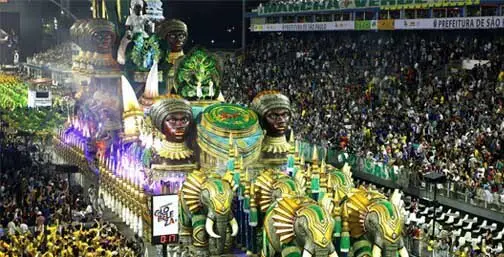
Brazil is a culturally rich country. We have lots of traditions and folklore and we do like to celebrate it all. Most of these cultural festivities became huge Brazilian festivals with time, bringing tourists to Brazil and making the country worldwide known.
If you want to immerse yourself in the Brazilian culture, there is nothing better than having fun while doing so. The main traditional Brazilian festivals are spread all around Brazil the whole year long. There is always somewhere to go, something to see and something new to learn about the Brazilian culture.
Let’s check the 5 main traditional Brazilian festivals.
Table of Contents
Toggle1. Carnaval in Rio de Janeiro
Carnaval happens around 40 days before Easter. So, usually during the month of February, sometimes March.
The Carnaval (also known as Carnival) in Rio de Janeiro is very popular worldwide. While it is just one big celebration, there are two ways to party in the city during this season.
Blocos de Carnaval
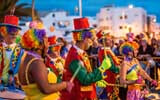 First, the famous ‘blocos de Carnaval’, street parties spread all over the city bringing millions of people to dance, sing, and have fun. It is important to choose a different costume for each day and buy lots of glitters to use.
First, the famous ‘blocos de Carnaval’, street parties spread all over the city bringing millions of people to dance, sing, and have fun. It is important to choose a different costume for each day and buy lots of glitters to use.
Carnaval officially starts on a Friday and goes until Tuesday. However, cariocas don’t like to wait, and these street parties start to happen way before the Carnaval season and continue even after the Carnaval week.
These ‘blocos’ can be small, with fewer than 100 people, but they can also be huge, with more than 1 million people following them.
The songs played in these street parties may vary, but they usually try to follow the Carnaval beat, with samba, axé, and ‘marchinhas’. There is even a very famous ‘bloco’ called Sargento Pimenta that plays Beatles songs in Carnaval rhythm.
The best ‘blocos’ in Rio start really early, at around 7 am. However, you can party all day long, as there are dozens of street parties going on around the city every day.
Samba Schools
The other way to enjoy Carnaval in Rio is in the Sambodrome, watching the Samba Schools parade.
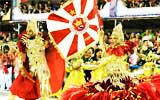 The opening night is on Friday when 6 or 7 samba schools from the Access Group debut. The parade starts at 10 pm and goes around until 4 am. The following day, the second batch of samba schools parade as well.
The opening night is on Friday when 6 or 7 samba schools from the Access Group debut. The parade starts at 10 pm and goes around until 4 am. The following day, the second batch of samba schools parade as well.
These schools in the Access Group fight for a place on the Elite Group of Carnaval, which parades the following days.
The Elite Group, called Grupo Especial, parades on Sunday and Monday.
It is a really great show, with lots of samba, costumes, drumming wings and much more. Their incredible allegorical floats can reach 13 meters high and 60 meters in length.
The winner of the Carnaval is announced on the afternoon of Ash Wednesday and the top 6 schools of the Elite Group parade once again in the Sambadrome the following Saturday to celebrate their achievement.
If you have never seen a Carnival parade before, it may be difficult to understand how big and well prepared this show is. So here’s a video of the 2020 winner:
2. Carnaval in Salvador
While samba is the main music of Carnaval in Rio, things are a bit different in Salvador.
The street parties are still the main way to celebrate Carnaval, but the real star here is the Axé Music, with its famous singers and bands bringing their ‘trio elétrico’ to the streets. ‘Trio elétrico’ is a popular type of sound truck on top of which an electric band plays.
In Salvador, rather than using different costumes, people wear ‘abadá’, a special T-shirt used as a ticket to enjoy Carnaval closer to the trucks.
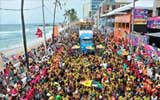 However, there are other two ways to enjoy Carnaval in Salvador. You can join the ‘pipoca’, people who didn’t buy the T-shirt but follow the truck outside of their security rope. And also the ‘camarotes’, private booths set up in nearby buildings where you see all the street parties while comfortably enjoying a VIP space with food, drinks, and private attractions.
However, there are other two ways to enjoy Carnaval in Salvador. You can join the ‘pipoca’, people who didn’t buy the T-shirt but follow the truck outside of their security rope. And also the ‘camarotes’, private booths set up in nearby buildings where you see all the street parties while comfortably enjoying a VIP space with food, drinks, and private attractions.
Carnaval in Salvador starts on a Thursday and goes around until Ash Wednesday.
3. São João in Paraíba
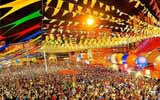 São João, also called Festa Junina, is a big part of the Brazilian culture. Every June Brazilians celebrate Saints John, Anthony, and Peter. It is also time to celebrate the harvest season, so the parties are full of traditional food made mainly of corn, such as ‘canjica’, ‘pamonha’, ‘pipoca‘, ‘curau’, and much more.
São João, also called Festa Junina, is a big part of the Brazilian culture. Every June Brazilians celebrate Saints John, Anthony, and Peter. It is also time to celebrate the harvest season, so the parties are full of traditional food made mainly of corn, such as ‘canjica’, ‘pamonha’, ‘pipoca‘, ‘curau’, and much more.
The São João party in Campina Grande, Paraíba, is the biggest one in the world. It lasts the whole month of June. Yes, all of the 31 days of the month!
This festivity is celebrated with food, dances, attractions, concerts, firepits, and more. The party happens at Parque do Povo, a free venue where everyone is welcome.
If you want to learn more about São João, teacher Josie has made a great video about Paraíba, Maranhão, and Bahia on our IGTV. Check it out!
4. Parintins
The Parintins Folklore Festival is a popular annual celebration held in Amazonas. It is one of the most famous Brazilian festivals in the country, almost as big as Carnival. It happens every year on the last weekend of June.
This party is an important part of the Brazilian Folklore and culture. It is an interactive play that tells the urban legend of the death and resurrection of an ox as a form of social criticism. Two main groups, Caprichoso and Garantido, compete every year to see which one tells the best story. Each team attempts to outdo the other in a parade, with dances, singing, and allegorical floats. The performance is based on local Amazonian folklore and indigenous culture.
This festival is so important that many songs wrote for the parades become huge national successes in Brazil, such as Vermelho by singer Fafá de Belém.
The rivalry between Caprichoso and Garantido supporters is such that they are compared to soccer team supporters. Caprichoso is represented by the color blue and Garantido by the color red. Supporters don’t ever wear the rival color in Parintins. A fun fact about this festival is that even Coca-Cola makes red and blue cans and ads so there is no problem with both teams.
Here’s the video of the winner of 2019 parading at the Bumbódromo:
5. Peão de Barretos
Even though this is a controversial party nowadays, it is still a huge festival in Brazil. Actually, it is one of the most famous Brazilian festivals in Latin America. It happens every August in São Paulo and lasts around 10 days.
This festival is the biggest country festival in Brazil, featuring rodeos, live concerts, blowing horn competitions, rodeo queen coronation, and other traditional attractions.
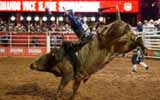
The numbers for Peão de Barretos Party are impressive: almost 100 thousand visitors a day, 600 cowboys and cowgirls competing, over 3,000 animals taken care of, more than 2 thousand people in the staff, and over 100 attractions. The venue for the festival is also huge: around 272 acres, including food courts and camping areas for visitors.
Other famous Brazilian festivals
Brazil is a huge country with several states and different cultures. That’s why it is very difficult to choose only the 5 main traditional Brazilian festivals to talk about. There are many other parties, festivities and festivals all around Brazil you should definitely learn more about.
Until we bring you part 2 of this list, check it out some other festivals in Brazil:
Rock in Rio: One of the biggest music festivals in the world, Rock in Rio happens every 2 years in Rio de Janeiro –usually in October. The festival lasts for around 6 days and is joined by big names of the music industry, such as the most famous bands in the world.
Folia de Reis: Another party that represents the Brazilian Folklore and religious celebration. It happens from December 24th until January 6th. It celebrates the visit of the three wise men to Jesus. This party happens all over Brazil, especially in the states of the Northeast region.
Oktoberfest of Blumenau: Just like the famous beer festival in Germany, Brazil has its own version of the Oktoberfest. It is held every October in Blumenau and it is considered the biggest German festival in the Americas.
Círio de Nazaré: Celebrated every second Sunday of October in Belém, Círio de Nazaré is an important religious event in Brazil. Thousands of people follow the statue of Our Lady of Nazareth of Exile through the streets of Belém in a procession.
Study Brazilian Portuguese with Caminhos Language Centre. You will learn how to speak Portuguese in an effective, dynamic, and fun way. We offer you a diverse learning curriculum and cultural immersion in Rio de Janeiro.


 Deutsch
Deutsch Français
Français Português
Português Español
Español
